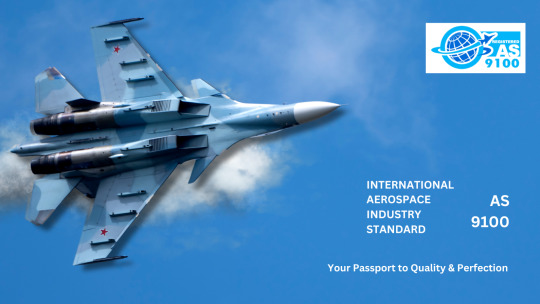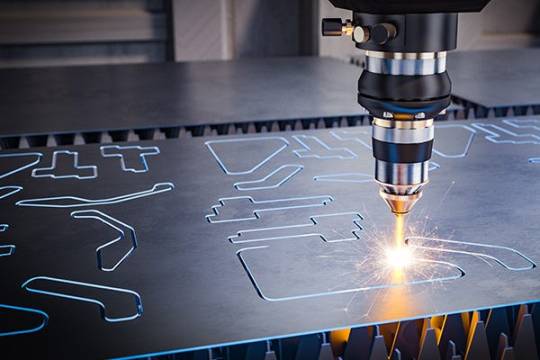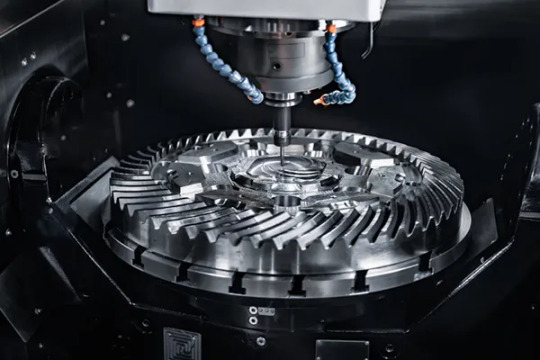Don't wanna be here? Send us removal request.
Text

Mastering Precision: Achieving Tight Tolerances in Precision Machining
Tolerances refer to the permissible variation in dimensions, form, and position of a part from the desired specifications. Tight tolerances mean stricter control over these variations, requiring precision down to fractions of a millimetre or even microns. This level of precision is crucial for parts that require seamless assembly, minimal clearance, or high-performance functionality.
Key Factors in Achieving Tight Tolerances
Advanced Machinery: Precision machining relies on state of the art CNC machines equipped with high-precision tools and cutting techniques. These machines offer exceptional control and repeatability, ensuring consistent results within tight tolerances.
Quality Materials: The choice of materials plays a critical role in achieving tight tolerances. High-quality metals, alloys, or engineered plastics with uniform properties contribute to stable machining processes and dimensional accuracy.
Tooling and Toolpath Optimization: Optimal selection of cutting tools, tool coatings, and cutting parameters is essential for achieving tight tolerances. Toolpath optimization reduces vibrations and tool deflection, minimising dimensional errors during machining.
Measurement and Inspection: Continuous monitoring and inspection throughout the machining process are imperative. Advanced metrology tools such as coordinate measuring machines (CMMs) and laser scanners verify dimensional accuracy and ensure compliance with tight tolerance requirements.
Skill and Expertise: Skilled machinists with in-depth knowledge of machining techniques, materials, and tooling are crucial for achieving tight tolerances. Their experience and attention to detail play a pivotal role in maintaining precision throughout the manufacturing process.
Benefits of Tight Tolerances
Enhanced Performance: Components manufactured with tight tolerances exhibit superior performance, reliability, and durability.
● Reduced Waste: Tight tolerances minimise material waste and optimise production efficiency, leading to cost savings.
● Compatibility and Interchangeability: Parts with tight tolerances ensure compatibility and ease of assembly in complex systems or machinery.
● Quality Assurance: Tight tolerances are a hallmark of quality, instilling confidence in product reliability and customer satisfaction.

Pushing the Boundaries of Precision
In the world of precision machining, achieving tight tolerances is not just a goal it's a testament to engineering excellence and innovation. As technology advances and demands for precision increase, the pursuit of tighter tolerances continues to drive innovation in manufacturing.
#Cnc machines in manufacturing#material selection in tight tolerance#precision machining#Innovation in manufacturing
0 notes
Text

The Importance of Aerospace
Manufacturing in India
In recent decades, India has emerged as a significant player in the global aerospace manufacturing industry. The country's journey from being a consumer of aerospace technology to a hub for manufacturing critical components and systems is not only fascinating but also underscores the vital role that aerospace manufacturing plays in India's economic growth and technological advancement.
Key Factors Driving Growth
Several factors contribute to the growing importance of aerospace manufacturing in India.
Strategic Significance:
Aerospace manufacturing is a great tech which India has developed to cater to manufacturing requirements of all major Aerospace industries in the world. Indian companies have made significant investments in this sector and have surprised many by its sheer technological prowess.
Technology and Innovation:
Aerospace manufacturing necessitates cutting-edge technology and innovation. India's focus on research and development has developed and shown results worldwide which has helped industries of all genres to explore and deliver to a wide spectrum of diversed technological industries.
Global Competitiveness:
With a burgeoning domestic market and increasing international collaborations, Indian aerospace manufacturers are becoming globally competitive. The 'Make in India' initiative further incentivizes domestic production and exports creating an additional requirement of skilled personals and machines boosting employment and the economy.
0 notes
Text
Enhancing Reliability: A Deep Dive into Stainless Steel Double Ferrule Tube Fittings
Introduction
Stainless steel double ferrule tube fittings have become indispensable components in various industries, providing a robust and reliable solution for fluid and gas systems. In this blog post, we will explore the features, benefits, and applications of these fittings, shedding light on why they are the preferred choice for many engineering applications.
Understanding Double Ferrule Tube Fittings:
Double Ferrule Tube fittings consist of two distinct ferrules — the front ferrule and the back ferrule. This innovative design ensures a strong and leak-free connection in tubing systems. The front ferrule seals the space between the fitting body and the tubing, while the back ferrule seals the space between the nut and the body. This dual ferrule design imparts enhanced gripping power and resistance to vibration, making them highly reliable in challenging operational conditions.

Key Features and Benefits:
Reliable Leak-Free Connections: The dual ferrule design provides a robust sealing mechanism, ensuring leak-free connections even in high-pressure applications. The back ferrule’s-controlled positioning eliminates the risk of over-tightening, preventing damage to the tubing and ensuring a reliable seal.
High Temperature and Corrosion Resistance: Stainless steel, a common material for these fittings, offers excellent resistance to high temperatures and corrosive environments. This resistance makes them suitable for applications in chemical processing, oil and gas, and other industries where exposure to harsh conditions is common.
Ease of Installation: Double ferrule tube fittings are designed for easy installation without special tools. Their user-friendly design reduces assembly time and increases overall efficiency.
Versatility in Applications: These fittings find applications in a wide range of industries, including petrochemical, pharmaceutical, food and beverage, and semiconductor manufacturing. They are suitable for both instrumentation and process control systems.
Durability and Longevity: Stainless steel construction ensures durability and longevity, reducing maintenance costs and downtime. The fittings are resistant to wear and tear, providing a reliable solution for long-term use.
Applications: Stainless steel double ferrule tube fittings find applications in various industries, including:
Oil and Gas
Petrochemical
Railway
Aerospace
Défense
Marine
Conclusion: Stainless steel double ferrule tube fittings have revolutionized fluid and gas systems by providing a reliable, leak-free, and durable solution. Their unique design, coupled with the benefits of stainless steel, makes them a preferred choice for critical applications in numerous industries. As technology advances, these fittings continue to play a vital role in ensuring the efficiency and safety of fluid and gas handling systems.
#Tube Fitting manufacturer#Stainless steel fittings#Double ferrule fittings#Tube fittings suppliers#Tube fittings
0 notes
Text
Mastering Aerospace Manufacturing with AS9100 Standards
In the world of aerospace manufacturing, where innovation meets precision, there’s no room for compromise. Enter AS9100, the ultimate navigator guiding industry players towards unparalleled excellence. Buckle up as we embark on a journey to discover how harnessing AS9100 standards can transform aerospace manufacturing facilities into powerhouses of quality and reliability.
Unveiling AS9100: Your Passport to Perfection
AS9100 is more than just a standard — it’s a roadmap that leads to consistent quality, safety, and efficiency. With meticulous attention to detail and unwavering dedication to perfection, aerospace manufacturers equipped with AS9100 soar above the competition, delivering flawless components that defy expectations.

Beyond the Horizon: Gaining a Competitive Edge
AS9100 streamlines processes, eliminates wasteful practices, and ignites a spark of innovation that accelerates productivity to new heights. From concept to delivery, every step is finely tuned for maximum efficiency and impact. With the coveted AS9100 seal of approval, companies not only demonstrate their commitment to excellence but also gain a competitive edge that propels them to the forefront of the industry.
0 notes
Text
The 4 Most Common Types of Precision CNC Machining
CNC machining is a catch-all term for a wide range of machining applications. The term “CNC” stands for Computer Numerical Controlled and refers to the machine’s programmable feature, which allows the machine to perform many functions with little human intervention. CNC machining is the process of creating a component with a CNC-controlled machine. A lot of CNC Manufacturers in India excel in providing you with these machines. The term refers to a group of subtractive manufacturing processes that involve removing material from a stock workpiece or bar to create a finished component part.

The 4 most common types of Precision CNC Machining are as follows:
CNC Lathes and Turning Machine:
During machining, CNC lathes and turning machines rotate materials. These machines use linear cutting tools to remove material around the revolving bar stock’s circle until the required diameter is reached. Internal and external components such as drilled holes and threads can be produced by a CNC lathe or a CNC turning machine. Screws, bolts, shafts, and poppets are examples of CNC machined components. Precision Components manufacturers may assist you with a CNC lathe and turning machine. A CNC lathe or a CNC turning machine can produce internal and external components such as drilled holes and threads.
2. CNC Milling Machines:
CNC milling machines are distinguished by their ability to rotate cutting tools while remaining stationary with the material workpiece/block. They can make a variety of shapes, such as face-milled features (shallow, flat surfaces and cavities in the workpiece) and peripheral-milled features (deep cavities such as slots and threads). CNC milling machine components are typically square or rectangular in shape and have a variety of features.
3. CNC Laser Machines:
CNC laser machines use a pointed router with a highly focused laser beam to cut, slice, or engrave materials precisely. The laser heats the material, causing it to melt or vaporize and leaving a cut in it. The material is typically in sheet form, and the laser beam moves back and forth across the material to create a precise cut. CNC laser engravers are frequently used to mark machined components. It can be difficult, for example, to machine a logo and company name into a CNC-turned or CNC-milled component.
4. CNC Plasma Cutting Machine:
CNC plasma cutters are also used to slice materials. They do it, however, with a computer-controlled high-powered plasma torch. Plasma torches operate similarly to hand-held gas welding torches but reach temperatures of 50,000°F. To form a cut, the plasma torch melts through the material. Precision CNC machining is used in the manufacturing industry to create CNC-machined components. Depending on the environment, material, lead time, volume, budget, and features, there is usually an optimal way to provide the desired output.
Supreme Metal Works is considered amongst the best steel components manufacturers. We are recognized as one of the renowned CNC Turned Component Manufacturers in Mumbai, India. Our diverse services include tube fitting which also happens to be our primary expertise. Quality and Customer satisfaction are what we assure you at Supreme Metal Works.
You can reach us on suprememetal.in

#cnc machined components manufacturer#manufacturers of tube fittings in india#ferrule fittings manufacturer in india#cnc machined components manufacturer in india
0 notes
Text
Behind the Scenes: Crafting Precision with CNC Machining
Discover how raw materials transform into intricate machine components.

Selecting the Right Materials
Choosing the right materials is crucial in CNC machining. We use steel, stainless steel, brass, and aluminum for various needs.
2. Material Procurement Process
We efficiently get our materials. They’re tested and inspected to ensure they meet our quality standards.
3. Quality Control at Every Stage
Quality matters to us. We constantly check our products during production to make sure they’re just right.
4. Surface Treatments and Finishes
Surface treatments are essential in making parts look and work great. See how finishes transform components.
5. Precision Measuring and Testing
We use modern equipment to measure and test our products accurately. It helps us ensure quality and precision
6. Crafting Components for Various Industries
Our CNC machined components serve many industries, like machines, molds, engineering, defense, and aerospace
If you have any inquiries about our manufacturing process, please feel free to visit our website.
#tube fittings manufacturer#cnc machined components manufacturer#ferrule fittings manufacturer in india#manufacturers of tube fittings in india#cnc machined components manufacturer in india
0 notes
Text
5 Benefits of CNC turned Components
Introduction:

CNC turned components are precision parts made with advanced machinery, offering better performance and saving time in various industries.
Advanced CNC technology enables easier manufacturing of dependable components and products from various materials.
Many industries are adopting CNC machining to streamline production and boost output.
Better Performance
CNC turned components offer exceptional performance without interruptions. Long-lasting performance enhances company momentum, precision, and efficiency
2.Saves Time
Increases accuracy and production speed, saving significant time.Drastically reduces manufacturing time, leading to improved efficiency.
3.Higher Precision
CNC turned components elevate production accuracy. Exceptional precision makes them highly reliable in manufacturing.
4.Affordability
Relatively less expensive compared to other manufacturing components.Combines affordability with high precision, increasing reliability.
5. High-Reliability
CNC turned components are highly reliable due to affordability, precision, and durability. Enhances manufacturing ease and overall productivity.
How Supreme Metal make the difference?
ISO Certified
Preferred Partner for Top Companies
High Standard Manufacturing Capacity
Manufacturing Automation
Qualified Talent
Advance Testing
#tube fittings manufacturer#cnc machined components manufacturer#ferrule fittings manufacturer in india#manufacturers of tube fittings in india#cnc machined components manufacturer in india
1 note
·
View note